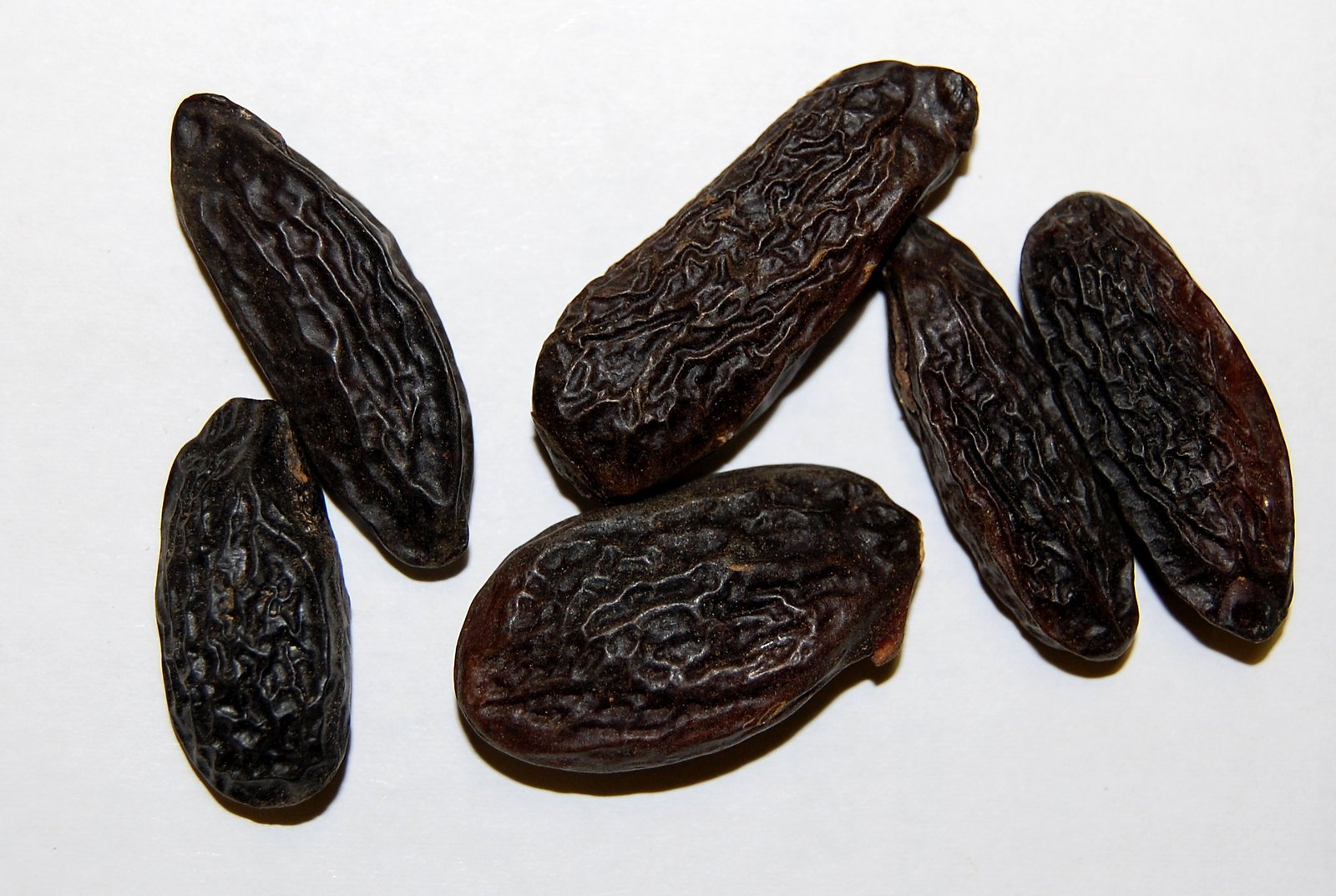28 January 2010
Vanilla, Gorgeous Heady Vanilla
I love vanilla. I really do. I blogged about it as a spice back in May 2009 under Vanilla - the temperamental diva.
At Steenbergs, we have had such a good run with our organic Fairtrade vanilla extract that we are nearly down to our last few drops. So last week, we got delivery of a new batch of organic Fairtrade vanilla beans and after Lee did the initial prep work he said that these Madagascan beans are of the most superior quality, and Lee's hard to please!

Well, I suppose that's what you would expect from our new suppliers from the Antsirabe Nord region of Northern Eastern Madagascar; these beans have much more luxuriant richness and depth of the character than our last batch of beans, which hailed from Kerala in India. Think of it as the difference between a New World wine and a Premier Cru from France; everything's the same but the terroir in France just creates more character.
I am really excited by our vanilla at the moment. We're getting a better quality extraction at present than before. Also, we have a great range of classic gourmet vanilla products - Steenbergs organic Madagascan gourmet vanilla beans (vanilla pods), organic vanilla powder (that's gorgeous beans from Mananara that have been ground to a rich black powder, that looks like gunpowder in the old Western films but smells like heaven), organic vanilla extract powder (that's the extract dried onto a dextrin base to remove the alcohol).
The gourmet beans are actually from a Fairtrade source and we trade these into Crazy Jack's and Essential Trading who pack them off as organic and Fairtrade, so we need to get our act together and actually launch them as Fairtrade! It's a bit ridiculous as we have had the product approved by Fairtrade and done the design work for them but never actually pushed the go button; soon, I assure you.

I (that's me Axel Steenberg) have also sourced a wonderful organic vanilla from the Democratic Republic of Congo from the foothills of the Ruwenzori Mountains in the Virunga National Park and near Lake Edouard, which is one of the two strongholds for the rare mountain gorilla (the other is Bwindi Inpenetrable Forest in Uganda).
I came across them whilst reading Tim Butcher's book (Blood River - A Journey To Africa's Broken Heart) about following in the footsteps of Stanley down the River Congo, like a latter day Kurtz, dodging the insurgents on the back of a motorbike or travelling down the lazy, languid Congo River on a pirogue; hence finding them was really poignant.
These Congolese organic vanilla pods have a different character to those from Madagascar and will be in short supply as getting them is really, really hard - these organic vanilla beans have a rawer, earthier flavour, full of chocolatey aromas but also an underlying sweet leathery intensity.
Now, I've added mysterious tonka beans to this flavour package. This is banned in the USA because it contains coumarin, an anticoagulant, but banning it almost makes it more exciting. And the top world chefs like Gordon Ramsay at Petrus-Gordon Ramsay or Alex Stupak at wd-50 or Ferran Adrià at El Bulli use it, so let's try it I say.
Tonka beans (memories of Tonka toys and that takes me a long way back) are the seeds of Dipteryx oderata, which originates from Venezuela in the Orinoco river basin. The main sources of tonka beans are Nigeria and Venezuela.

It looks like a flat, wrinkled deep black bean/nut with a shape that's reminiscent of an almond and a look that's a cross between a prune and date. They have a flavour and aroma that is full of volatiles and immediately remiscent of vanilla but with more esters coming through like pear drops or furniture polish, with hints of magnolia and other warming, sweet spices notes like cinnamon, cloves and allspice. It is used in French cuisine and sometimes for perfumes, and even flavouring tobacco.
Anyway, Steenbergs tonka beans come from Venezuela and a little goes a long way as they are very specialist and very strong - completely decadent and slightly naughty. You use them like a nutmeg and grate them, so you could cook with them as a garnish over coffee or into cream or over stewed rhubarb. I'll conjur up some recipes in a future blog, so hang fire on asking for a recipe.




